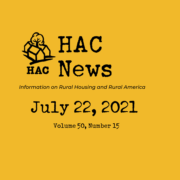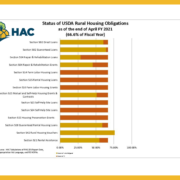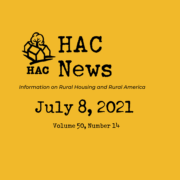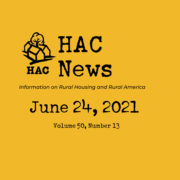HAC News: August 19, 2021
Vol. 50, No. 17
TOP STORIES
Senate passes budget resolution and infrastructure bill.
On August 11, the Senate narrowly approved S.Con.Res. 14, the budget resolution that will serve as a vehicle for the $3.5 trillion economic recovery package. The resolution includes billions of dollars for housing programs, although details are not yet available. The bipartisan infrastructure bill, H.R. 3684, passed the Senate on August 10. The House is scheduled to return on August 23 to take up one or both of these measures, as well as a voting rights bill.
New eviction moratorium challenged in court.
A legal challenge to the moratorium issued August 3 by the Centers for Disease Control was filed by the Alabama and Georgia Associations of Realtors®, the plaintiffs that took a previous challenge to the U.S. Supreme Court. On August 13, the federal district court declined to halt implementation of the moratorium. The plaintiffs have appealed that decision. In a separate case, on August 12 the Supreme Court struck down a part of New York state’s eviction moratorium that protected tenants from eviction if they certified they were experiencing economic hardship, but did not provide a way for landlords to challenge those self-certifications.
Population growth in rural America was small – and uneven – between 2010 and 2020.
Using Census 2010 and 2020 data, combined with methodology from HAC’s Rural and Small-Town definition of location, HAC estimates that the rural population increased by approximately 164,000 residents over the last decade, a 0.3% growth rate. Overall, HAC estimates that approximately 60,551,165 people live in rural communities using the latest Census data. A HAC Rural Research Note analyzes recently released 2020 Census data and includes an interactive map showing population change for every county.
Committee sends Torres Small nomination to the full Senate.
After a July 29 hearing, on August 10 the Senate Agriculture Committee voted to approve the nomination of Xochitl Torres Small to become USDA Under Secretary for Rural Development. A vote by the full Senate is now the final step needed for her confirmation.
Save the date! 2021 National Rural Housing Conference scheduled.
The Housing Assistance Council is pleased to announce plans to convene its 2021 National Rural Housing Conference and Training! The conference provides an excellent opportunity to network and improve connections to federal agencies, national intermediary organizations, and other stakeholders. The HAC News will announce when registration opens.
RuralSTAT
Rural and small-town places in the U.S. experienced only 0.3% population growth from 2010 to 2020, while suburbs and exurbs grew by 11.8%. Source: HAC tabulations of the U.S. Census Bureau’s 2010 and 2020 Census of Population and Housing. A Rural Research Note on population growth over the past decade is available on HAC’s site.
OPPORTUNITIES
Emergency Rural Health Care Program offers grants.
Sub-state level governments, nonprofits, and tribes can apply to assist places with up to 20,000 population through the new Emergency Rural Health Care program. Track One will make recovery grants to support immediate financial relief needs. Track Two will provide impact grants to advance ideas and solutions to support the long-term sustainability of rural health care. The deadline for both is October 12. For more information, contact Jamie Davenport, USDA, 202-720-0002.
HAC seeks Community Facilities Housing Specialist.
The Community Facilities Housing Specialist identifies and engages community stakeholders and provides direct technical assistance to rural organizations that are developing facilities such as parks, community centers, public libraries and childcare centers. This includes helping them identify, utilize, and apply for financial resources such as USDA Community Facilities grants and loans. This is a two-year position and is eligible for telecommuting.
CORONAVIRUS
Online tool helps tenants use CDC eviction moratorium.
A2J Tech, which describes itself as a social enterprise that builds technology to improve access to justice, offers a free tool for renters to make sure they are eligible for protection under the CDC moratorium and then prepare the declaration they must give to their landlord.
REGULATIONS AND FEDERAL AGENCIES
HUD and FHFA to work together on fair housing and fair lending.
On August 12, HUD and the Federal Housing Finance Agency announced a new memorandum of understanding regarding fair housing and fair lending enforcement. The agencies say the MOU promotes information sharing, coordination on investigations, compliance reviews, and the ongoing monitoring of the Fannie Mae, Freddie Mac, and the Federal Home Loan Banks.
Housing goals proposed for Fannie Mae and Freddie Mac.
The Federal Housing Finance Agency has proposed goals for Fannie Mae’s and Freddie Mac’s purchases of mortgages for low-income and minority owners and renters in 2022-2024. Comments will be due 60 days after the goals are published in the Federal Register. For more information, contact Ted Wartell, FHFA, 202-649-3157.
Fannie Mae will consider rental payments by homebuyers.
Lenders that work with Fannie Mae will be permitted to take positive rental payment histories into account when underwriting first-time mortgage applications. Fannie Mae predicts that allowing homebuyers to demonstrate their credit history this way will enable more people of color to qualify for mortgages.
2021 compliance supplement for audits released.
The 2021 Compliance Supplement to OMB’s Uniform Administrative Requirements, Cost Principles, and Audit Requirements applies to audits of fiscal years beginning after June 30, 2020 for nonprofits, state and local governments and tribes receiving federal funds. Comments are due August 30. For more information, contact the relevant federal agency.
OMB recommends steps for federal agencies to advance racial equity.
Study to Identify Methods to Assess Equity: Report to the President, published by the Office of Management and Budget, responds to a provision in President Biden’s Executive Order 13985, Advancing Racial Equity and Support for Underserved Communities Through the Federal Government, which requested recommendations on ways to expand equity assessment in federal agencies. OMB found that equity assessment is still evolving, though a broad range of frameworks and tools have been developed. It suggested expanding opportunities for meaningful stakeholder engagement and instituting long-term change management. Agencies will need to include equity initiatives in their strategic, administrative, budget, and evaluation plans, the report says, and to make key investments in hiring and ongoing workforce training.
PUBLICATIONS AND MEDIA
Case studies describe hotel/motel conversions to housing.
During the pandemic, numerous states and localities have acquired hotels and motels and rapidly converted them into permanent housing. A set of case studies by the Alliance to End Homelessness describes several such efforts, including statewide programs in Oregon and Vermont that conducted conversions in rural areas as well as cities.
CFPB reports on mortgage servicers’ pandemic responses, will continue monitoring them.
Based on a data review, the Consumer Financial Protection Bureau reported the pandemic responses of 16 large mortgage servicers varied widely. CFPB told servicers to compare the report’s findings to their own internal metrics to identify opportunities for, and demonstrate concrete efforts toward, improvement.
Rural places may lose political power due to population changes.
A Pew Charitable Trusts analysis based on estimates of rural population decline predicts these communities will have less political clout once electoral redistricting occurs. The growing suburban/urban portions of states are likely to gain power.
86% of persistent poverty counties are outside metro areas.
USDA’s Economic Research Service reports 310 counties – 10% of all U.S. counties – had high and persistent levels of poverty in 2019. Of those, 267 counties were outside metropolitan areas and were concentrated in historically poor areas of the Mississippi Delta, Appalachia, the Black Belt, and the southern border regions, as well as on Native American lands.
Hispanics overrepresented in worker deaths from heat.
A National Public Radio report, Heat Is Killing Workers in the U.S. – and There are No Federal Rules to Protect Them, describes an increase in worker deaths due to environmental heat exposure. Hispanics, who are 17% of the U.S. workforce, account for a third of heat fatalities since 2010 because they are overrepresented in vulnerable jobs such as farm work and construction. Improved regulations may not be enough to protect workers, however; California is one of the few states with heat rules, but annual worker heat deaths there have remained steady over the past decade.
Guide addresses tenant issues in tax credit properties.
An Advocate’s Guide to Tenants’ Rights in the Low-Income Housing Tax Credit Program, published by the National Housing Law Project, covers evictions, rent calculations, and eligibility.
Need capital for your affordable housing project?
HAC’s loan fund provides low interest rate loans to support single- and multifamily affordable housing projects for low-income rural residents throughout the U.S. and territories. Capital is available for all types of affordable and mixed-income housing projects, including preservation, new development, farmworker, senior and veteran housing. HAC loan funds can be used for pre-development, site acquisition, site development, construction/rehabilitation and permanent financing. Contact HAC’s loan fund staff at hacloanfund@ruralhome.org, 202-842-8600.
Please note: HAC is not able to offer loans to individuals or families. Borrowers must be nonprofit or for-profit organizations or government entities (including tribes).

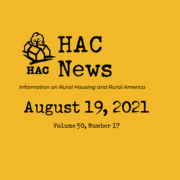
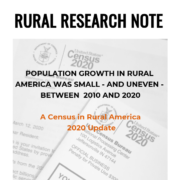 Housing Assistance Council
Housing Assistance Council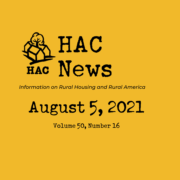
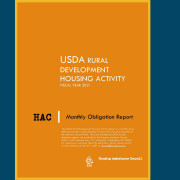
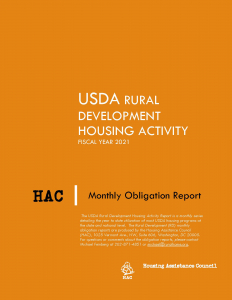
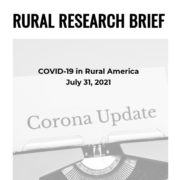 Housing Assistance Council
Housing Assistance Council